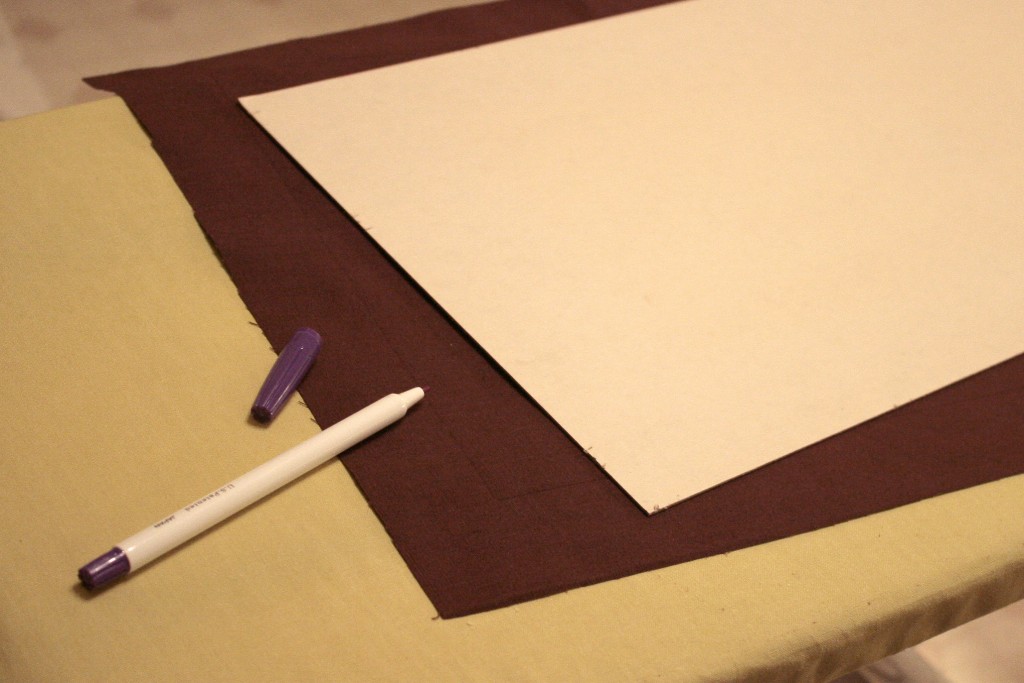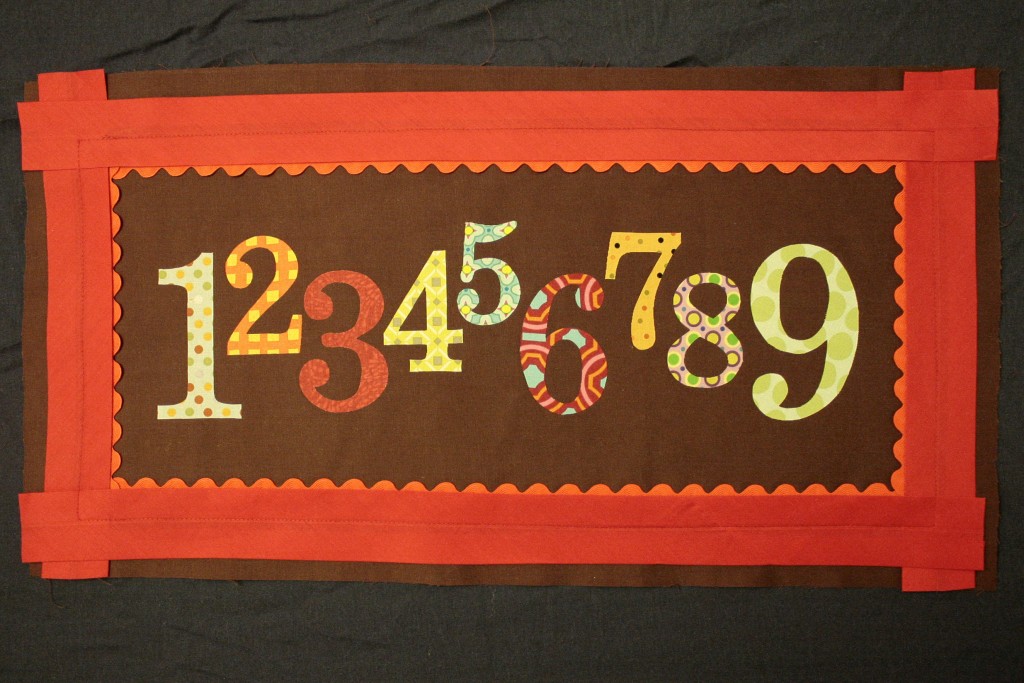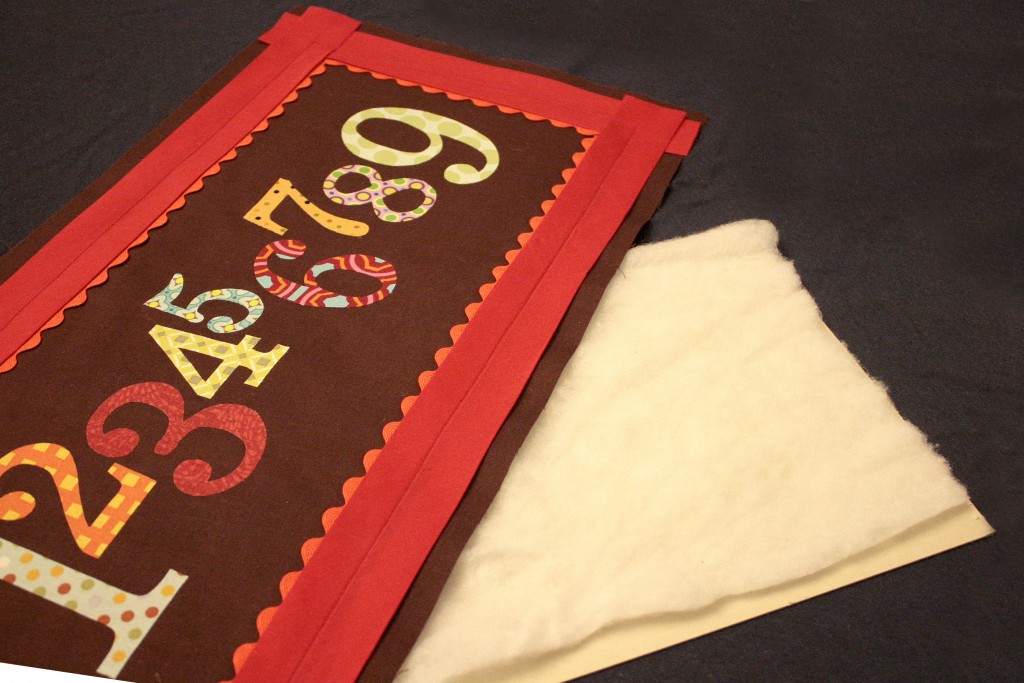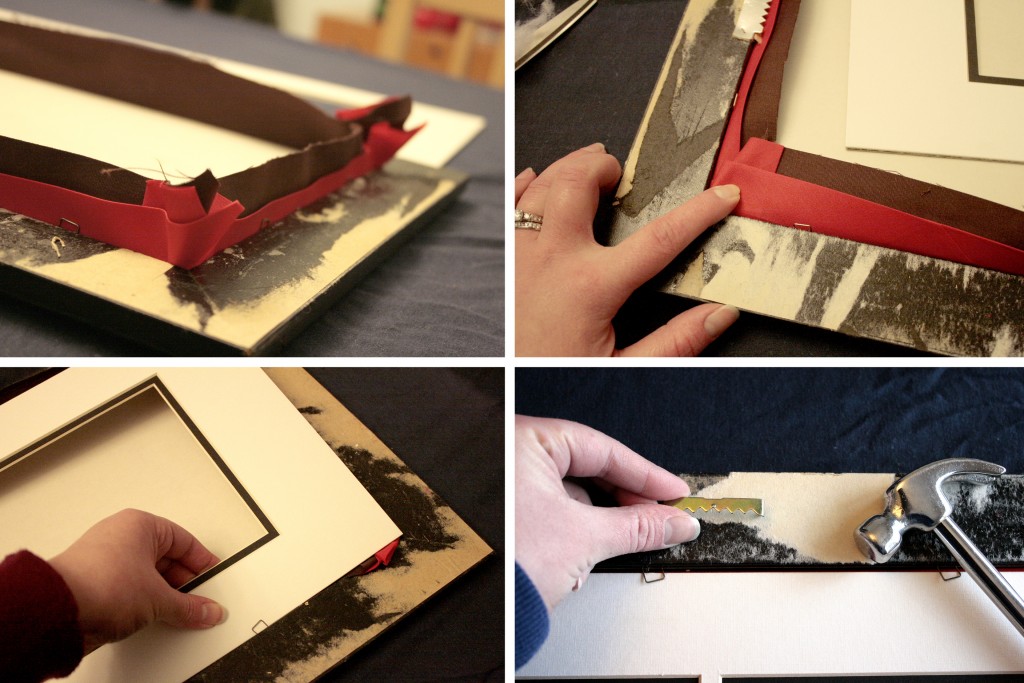This was my entry for the first week of the One Month to Win It competition where I am currently a contestant! The contest started with 12 contestants and each week 3 are voted off. Luckily, I made it through the first round so below is the tutorial for my project. In other exciting news, I've started a shop for my patterns! I'll still be including free patterns on most posts but the ones that have a more detailed design and need printable pages will be in the shop.

Materials list:
The following supplies are exactly what I used. You could easily modify this design to use a different frame or no frame and just wrap the fabric around a piece of cardboard backing.
- One 14" tall x 25" long frame with cardboard backing (glass not necessary) with an opening of
21 1/2" x 9 3/4" - One piece of brown fabric 4" larger than the cardboard backing from the frame (I used 25 1/2" x 13 3/4")
- 1/4" batting the same size as your brown background fabric
- Six strips of red 1/2" grosgrain ribbon cut to 26" with optional black wooden beads threaded onto the bottom of each (a total of 13 feet of ribbon)
- One package Wrights® scarlet double fold quilt binding bias tape
- One package Wrights® orange jumbo rick rack
- One roll of 1/4" fusible web for the border
- Alphabet blocks printed onto cardstock and cut out (pages 6, 7, 8). If printing correctly they should be 2 3/8" square.
- Number stencils
- Nine fabric scraps for the numbers
- Fusible web for the numbers
- Iron, glue gun, sewing machine (optional), rubber cement (optional)
Step 1: Make the applique numbers. First cut out the number stencils and line up your fabrics in order on your background to make sure you like the color choices.
Then cut out rectangles slightly larger than your numbers. Iron your fusible web to the rectangles. I like to first use the tip of my iron to iron down just the center of the rectangles. Then, cut off all the excess fusible web, then iron it down completely. This helps you avoid getting the sticky backing on your iron. If that happens, just wipe it off on a paper towel. Then trace all your number stencils backwards on each rectangle and cut out the numbers.


Measure the length and width of the red border from the center of the bias tape. Using that measurement cut two strips of rick rack for the length and two for the width. Using fusible web strips under the rick rack, iron it down just inside the bias tape border so it looks like a scalloped edge. Then place a second strip of fusible web on top of the rick rack and iron the bias tape down.
Step 3: Putting it all together. Now that your border is complete, arrange and iron down your numbers.
Step 5: Finishing the back. To make the back of the frame a little more professional looking I cut a piece of paper to the size of the frame and used rubber cement to glue it to the frame. I chose rubber cement so I could eventually peel off the backing paper if necessary.











